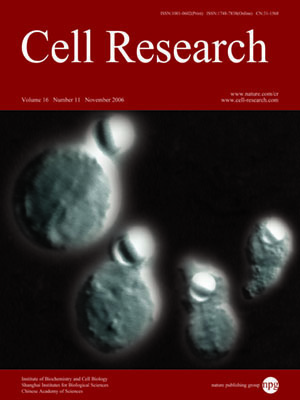
Volume 16, No 11, Nov 2006
ISSN: 1001-0602
EISSN: 1748-7838 2018
impact factor 17.848*
(Clarivate Analytics, 2019)
Volume 16 Issue 11, November 2006: 887-894
ORIGINAL ARTICLES
Interaction of non-adherent suspended neutrophils to complement opsonized pathogens: a new assay using optical traps
Tomoko Suzuki, Masaru Yanai, Hiroshi Kubo, Akio Kanda, Hidetada Sasaki, James P Butler
1Department of Geriatric and Respiratory Medicine, Tohoku University School of Medicine, Sendai 980-8574, Japan; 2Physiology Program, Harvard School of Public Health, Boston, MA 02115, USA
Correspondence: Hiroshi Kubo(hkubo@geriat.med.tohoku.ac.jp)
Phagocytosis of opsonized pathogens by circulating non-adherent neutrophils is an essential step in host defense, which when overwhelmed contributes to sepsis. To investigate the role played by ligation of complement receptors CR3 and CR4 in non-adherent neutrophils, we designed a novel assay system utilizing dual optical traps, respectively, holding a suspended unactivated cell and presenting a specific ligand-coated bead to the cell surface. We chose anti-CD18 as an example ligand, mimicking the bacterial opsonizing complement fragment iC3b. Presentation of anti-CD18-coated beads elicited both pseudopodial protrusion and subsequent phagocytosis. This is in sharp contrast to previously reported responses of adherent neutrophils, which phagocytize opsonized particles without pseudopod formation. We used this same new assay to probe actomyosin pathways in the neutrophil’s pseudopodial and phagocytic response. Disruption of actin or inhibition of myosin light-chain kinase dose-dependently reduced pseudopod formation and phagocytosis rates. In summary, i) the new dual trap assay can be used to study the responses of suspended neutrophils to a variety of ligands, and ii) in a first application of this technique, we found that local ligation of CR3/4 in unactivated neutrophils in suspension induces pseudopod formation and phagocytosis at that site, and that these events occur via an actomyosindependent pathway.
Cell Research (2006) 16:887-894. doi:10.1038/sj.cr.7310103; published online 24 October 2006
FULL TEXT | PDF
Browse 2029


